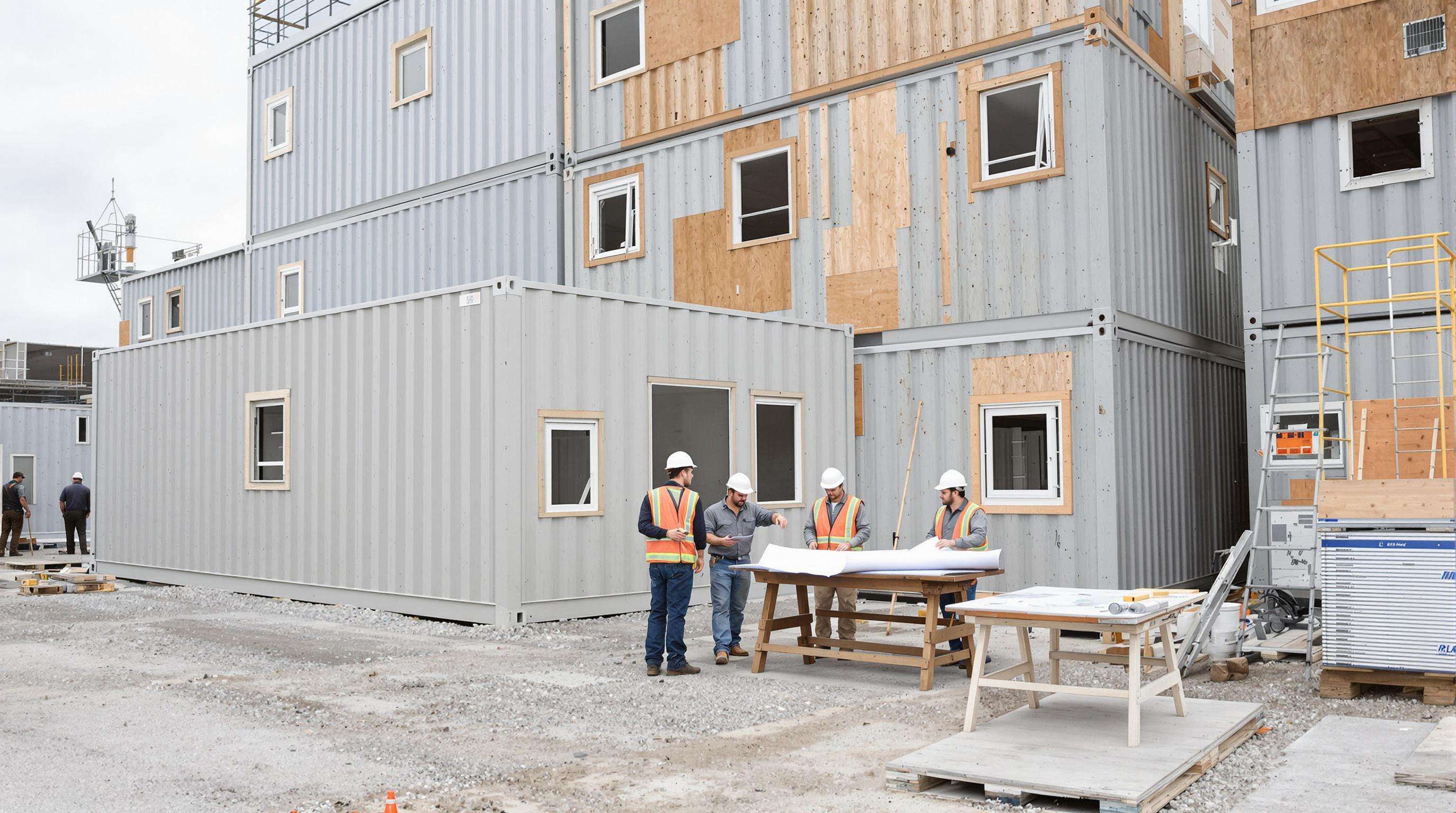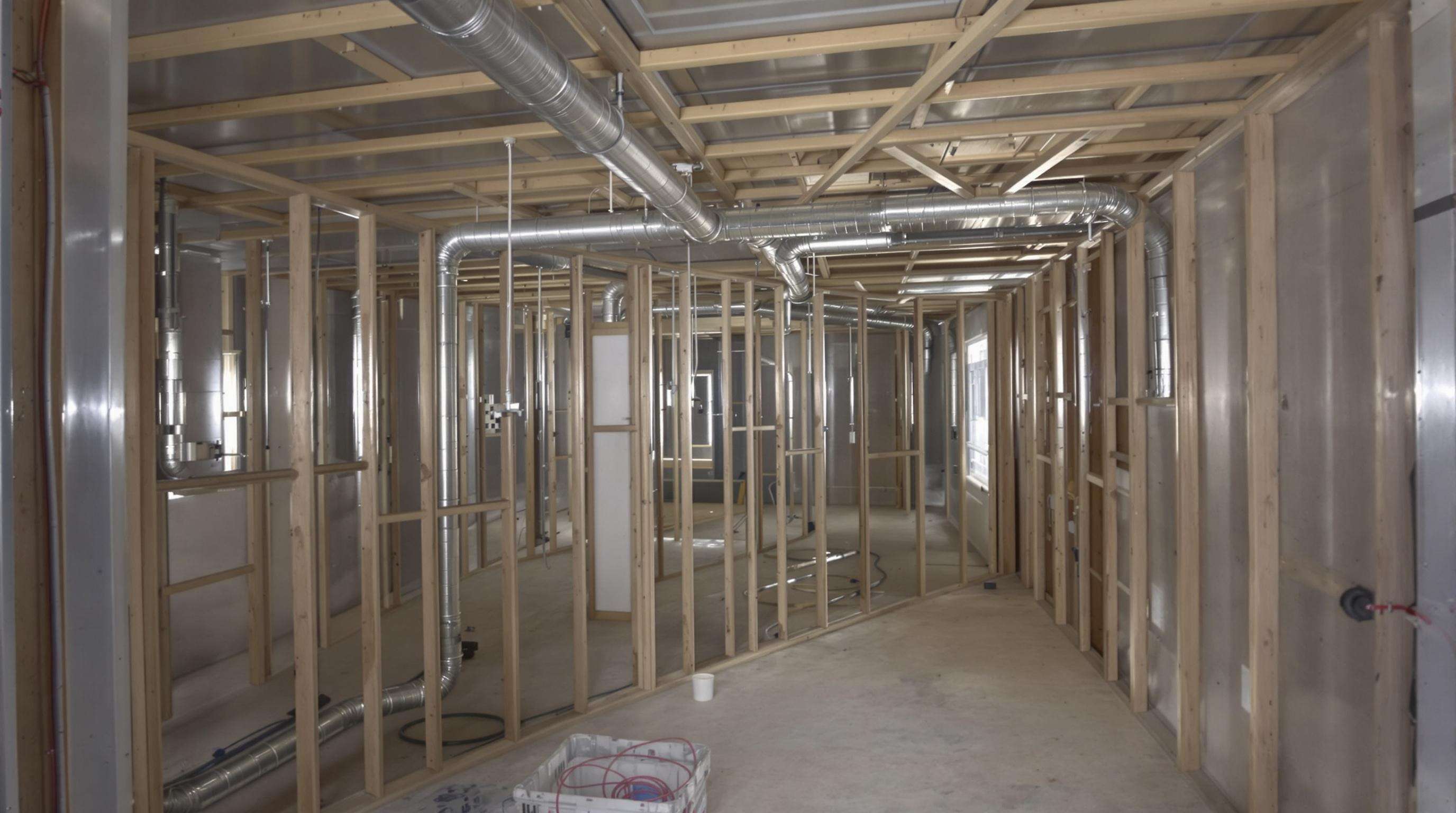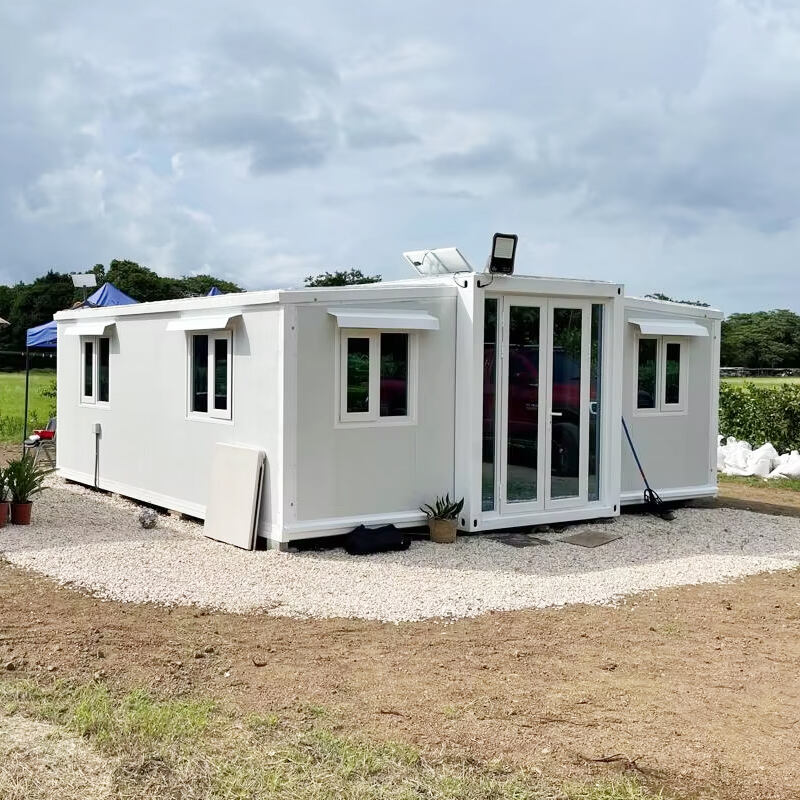Understanding the Core Components of Container Home Costs

Why Custom Container Homes Are Gaining Popularity
Custom container homes appeal to homeowners seeking affordability, sustainability, and design flexibility. These structures repurpose steel shipping containers, reducing construction waste by up to 30% compared to traditional builds. Their modular nature allows faster project completion—often 20–30% quicker than conventional homes—making them ideal for rapid housing solutions.
Key Factors That Influence the Overall Cost of a Container Home
Four primary drivers shape container home pricing:
- Container Condition: Used units cost $1,500–$4,500, while new ones range from $3,000–$6,000.
- Modification Complexity: Cutting windows/doors adds $500–$2,000 per opening.
- Site Preparation: Foundations account for 10–15% of total costs ($5k–$25k).
- Labor: Professional crews charge $50–$150/hour, versus DIY savings of 30–40%.
Recent data shows labor shortages have increased installation fees by 18% since 2021.
Average Cost Breakdown: A 40-Foot Single-Unit Container Home
A basic 40-foot unit conversion averages $25,000–$80,000:
| Component | Cost Range | % of Total |
|---|---|---|
| Container Purchase | $3,000–$6,000 | 12–20% |
| Insulation | $2,000–$5,000 | 8–16% |
| Electrical/Plumbing | $8,000–$15,000 | 32–40% |
| Interior Finishes | $5,000–$20,000 | 20–30% |
How Container Home Prices Have Evolved Over the Past 5 Years
Steel prices surged 74% between 2020–2023, pushing new container costs up 22%. However, growing competition among modular home builders has reduced labor margins by 9% since 2022, offsetting some material increases.
How to Estimate Your Starting Budget for a Custom Container Home
Allocate $150–$300 per square foot for a realistic budget. Use this formula:
(Container Units à $4,500) + (Square Footage à $200) + 20% Contingency = Estimated Total For example, a 640 sq ft home with two containers would budget:
(2 Ã $4,500) + (640 Ã $200) + 20% = $141,600 Always verify local zoning laws early—unexpected permit fees derail 27% of projects.
Detailed Cost Breakdown: From Container to Foundation
Shipping Container Costs: New vs. Used Containers
Brand new 40 foot shipping containers usually set buyers back around $3k to $5k, whereas secondhand ones can be had anywhere between $1,500 and $4,000 based on what shape they're in. The catch with older containers is often the hidden costs though. Many need work done on them first like getting rid of rust spots or fixing structural issues, adding another $500 to maybe $2,000 onto the price tag. Most folks in the business will tell you that about two thirds of all custom container projects start with used units because they're cheaper at first glance. But here's the thing nobody mentions much these days: roughly 3 out of every 10 used containers end up needing major changes before they're actually usable for whatever purpose someone wants.
Foundation and Site Preparation Expenses
Foundations represent 10–15% of total project costs. Concrete slab foundations average $5–$10 per square foot, while pier systems cost $7–$15 per square foot. Site preparation—including grading, soil testing, and excavation—adds $2,500–$7,000. A 2023 structural engineering study found projects on sloped terrain incurred 22% higher foundation costs than flat sites.
Structural Modifications and Framing Requirements
Cutting openings for doors and windows costs $1,500–$3,000 per container, while reinforcing walls and welding multiple units together ranges from $8,000–$15,000 for a 40-foot design. Multi-container configurations require steel framing ($4–$8 per linear foot) to ensure structural integrity.
Insulation, Doors, Windows, and Roofing Costs
| Component | Cost Range | Key Considerations |
|---|---|---|
| Spray foam insulation | $1.50–$3.00/sq. ft | Highest R-value (6.0 per inch) |
| Panel insulation | $0.80–$1.50/sq. ft | Easiest DIY installation |
| Windows/Doors | $3,000–$8,000 total | Energy-efficient models save 18% HVAC costs |
| Metal roofing | $5–$12/sq. ft | 50-year lifespan vs asphalt shingles |
High-performance windows ($500–$1,200 each) and insulated steel doors ($800–$2,500) prevent thermal bridging, a common issue in 73% of unmodified container homes.
Labor, Permits, and Design Factors That Impact Container Home Pricing
How Size and Number of Containers Affect Total Cost
How big the container home project gets really affects what it will cost. Every additional standard shipping container means more work on structural modifications and foundations, usually adding around 15 to 25 percent to expenses. When building something bigger with multiple containers connected together for spaces between 600 square feet all the way up to over 2,000 square feet, there's a lot of welding needed to reinforce everything properly. These larger setups often end up costing well over $100,000 in total. Interestingly enough, going with those longer 40 foot containers actually brings down the price per square foot by about 20 percent when compared to smaller 20 foot units. However, these bigger containers need special equipment like cranes which rent out for anywhere from $500 to $2,000 per day, making them impractical for many smaller building sites to handle.
DIY vs. Professional Labor: Cost and Quality Trade-offs
The cost of labor typically eats up around 35 to 50 percent of what people spend on container homes. Hourly wages for workers range from about fifty bucks to two hundred dollars an hour depending on where someone lives and what kind of expertise they need. When hiring pros, folks get peace of mind knowing their project meets building codes and stands up straight, but going the DIY route cuts expenses by maybe thirty to forty five percent. Of course, this requires real skill with welding equipment and framing techniques that many just don't have lying around. Most places also require licensed plumbers and electricians for those parts of the job, which adds somewhere between ten thousand and twenty five thousand dollars to the overall price tag of constructing these unique living spaces.
Permits, Zoning Laws, and Regulatory Fees
Obtaining permits represents a non-negotiable cost layer ranging from $500–$5,000, influenced by local container-specific regulations. According to a 2024 analysis, 60% of U.S. municipalities require zoning variances for container homes, potentially demanding architectural stamps ($1,500–$4,000) and delaying projects by 2–6 months. Coastal and flood zones impose 40% higher permitting fees on average.
Design Complexity and Aesthetic Finishes: Cladding, Layouts, and Outdoor Spaces
When it comes to custom features, prices go up fast. Take those fancy angled cuts for example they typically run between three hundred to eight hundred dollars per opening, whereas regular windows and doors are much cheaper at around one hundred to four hundred bucks each. For the outside of buildings, premium materials like cedar wood or corten steel can set homeowners back seven to eighteen dollars per square foot, compared to just two to five dollars for plain old paint jobs. Inside, adding extra support walls means paying anywhere from two hundred to four hundred dollars per linear foot. And if someone wants that modern open floor plan look, expect to shell out five thousand to fifteen thousand dollars for the necessary beam reinforcements. Oh, and don't forget about patios or covered decks either these additions usually bump up the total budget by ten to fifteen percent.
Utility Systems and Interior Finishing Expenses

Electrical, Plumbing, and HVAC Installation Costs
Utility installations eat up around 18 to 25 percent of what most people spend on container homes overall. When it comes down to actual numbers, plumbing can set homeowners back anywhere between $1,600 and $16,500 depending on what they need installed. Electrical work tends to be cheaper but still varies quite a bit too, usually costing somewhere between $650 and $2,500 based on how complicated the wiring needs to be. Heating, ventilation and air conditioning (HVAC) systems generally add another $3k to $8k onto the bill, though prices jump significantly when someone wants multiple zones controlled separately or goes for those fancy energy saving heat pumps. Container homes differ from standard stick built houses because all these utilities have to snake their way through metal walls and floors, something that takes extra time for workers and adds about 15 to 30 percent more labor costs. It pays to invest in licensed contractors who know local codes inside out since getting things right the first time saves money in the long run and keeps inspectors happy.
Water, Sewer, and Off-Grid Options Including Solar Power
Going off-grid definitely gives homeowners more freedom, though it does come with higher upfront expenses. A basic solar power system for most homes will set someone back between twelve thousand and twenty grand, depending on what components they need for their 5kW setup. Rainwater collection tanks aren't so bad either, costing around one thousand two hundred to five grand when professionally installed. Connecting to city sewers typically runs anywhere from two thousand five hundred up to fifteen thousand dollars, but folks who opt for composting toilets instead can save big bucks, paying only eight hundred to two thousand four hundred for models that work independently. For properties in rural areas, building codes usually demand septic tanks which range from six to twelve thousand dollars, plus well drilling that costs roughly twenty to forty dollars per foot drilled. Looking at the bigger picture, those who go the off-grid route for water management tend to see savings of about ten to maybe even thirty five percent over time, despite the initial investment required.
Interior Finishes: Drywall, Painting, and Flooring Options
Material choices dramatically affect aesthetics and budgets. Consider these common finishes:
| Finish Type | DIY Cost (Materials) | Professional Installed Cost |
|---|---|---|
| Drywall | $1.50–$2.50/sq. ft. | $3–$7/sq. ft. |
| Laminate Flooring | $1–$3/sq. ft. | $4–$10/sq. ft. |
| Interior Painting | $0.50–$1.50/sq. ft. | $2–$5/sq. ft. |
High-end upgrades like epoxy flooring ($7–$15/sq. ft.) or soundproof drywall ($2–$4/sq. ft.) add luxury but increase costs by 20–45% over basic options. For budget builds, reclaimed wood paneling ($0.80–$2.50/sq. ft.) balances rustic charm and affordability.
Hidden Costs and Smart Cost-Saving Strategies for Container Homes
Unexpected Expenses: Corrosion Treatment, Crane Fees, and Insulation Upgrades
Nearly 32% of container home projects exceed initial budgets due to unanticipated costs. Corrosion treatment alone adds $3,500–$7,000 for industrial-grade coatings on a 40-foot unit. Crane rentals for positioning containers range from $750–$2,500 per day, while spray foam insulation—though 40% more efficient than fiberglass—adds $1.80–$3.50 per square foot over budget.
When ‘Low-Cost’ Builds Go Over Budget: Common Pitfalls
Ambitious DIYers often underestimate electrical rework costs (up to $18k for retrofitting) and drainage requirements ($4,800+ for sloped sites). A 2023 industry survey found 61% of projects underestimated expenses by focusing solely on container purchase prices while ignoring $25k+ engineering fees for multi-unit stacking.
Balancing Long-Term Savings with High Initial Modifications
Investing in Corten steel ($12k–$20k premium) eliminates repainting costs for 40+ years, while triple-glazed windows ($280/window vs. $125 standard) reduce HVAC loads by 19%. These upfront investments yield 7–12 year payback periods through energy savings.
Proven Tips to Reduce Costs Through DIY, Planning, and Material Choices
- Use reclaimed cedar ($2.30/sqft) instead of composite siding ($6.70/sqft)
- Phase installations: Complete weatherproofing before interior finishes
- Source retired reefers for pre-installed insulation (cuts thermal upgrades by 35%)
- Negotiate 10–15% bulk discounts on 4+ containers from regional ports
Thorough site analysis and modular designs reduce crane time by 60%, while standardized container configurations (e.g., 8x40ft vs custom 9x45ft) avoid $18k+ in structural reinforcements.
FAQ
What factors affect the cost of container homes?
The cost is influenced by container condition, modification complexity, site preparation, labor, permit fees, and more.
Is building a container home cheaper than a traditional home?
Yes, container homes are generally cheaper due to affordability, sustainability, and reduced construction waste.
How does site preparation affect the cost?
Site preparation impacts foundation expenses, which account for about 10–15% of total costs. Sloped sites may incur higher costs.
Can I save money by doing the work myself?
DIY can save 30–45% of labor costs but requires skill in areas like welding and framing.
What are common pitfalls in container home projects?
Common pitfalls include underestimating costs, especially for electrical work, drainage, and engineering fees in complex projects.
Table of Contents
-
Understanding the Core Components of Container Home Costs
- Why Custom Container Homes Are Gaining Popularity
- Key Factors That Influence the Overall Cost of a Container Home
- Average Cost Breakdown: A 40-Foot Single-Unit Container Home
- How Container Home Prices Have Evolved Over the Past 5 Years
- How to Estimate Your Starting Budget for a Custom Container Home
- Detailed Cost Breakdown: From Container to Foundation
- Labor, Permits, and Design Factors That Impact Container Home Pricing
- Utility Systems and Interior Finishing Expenses
- Hidden Costs and Smart Cost-Saving Strategies for Container Homes
- FAQ

